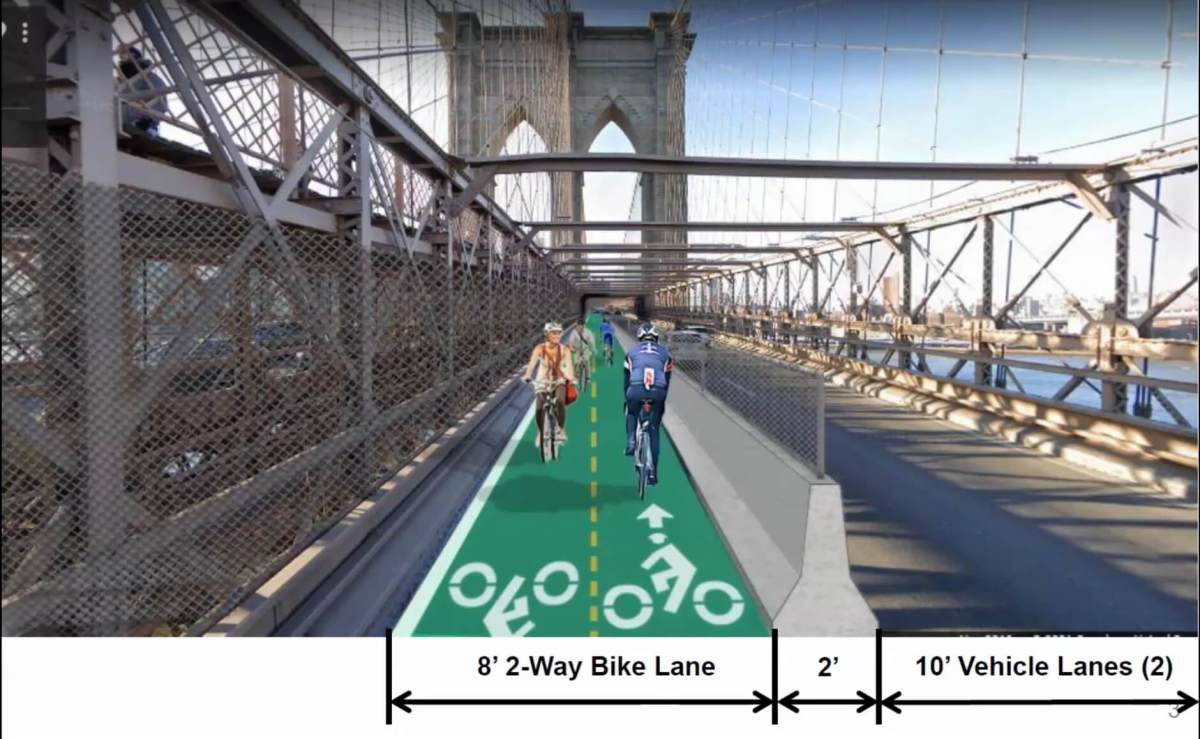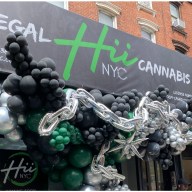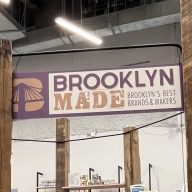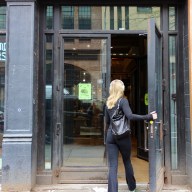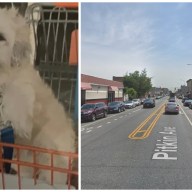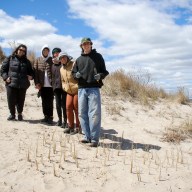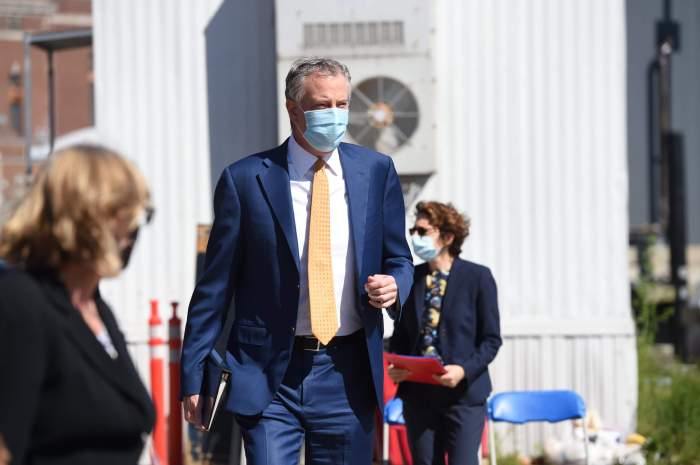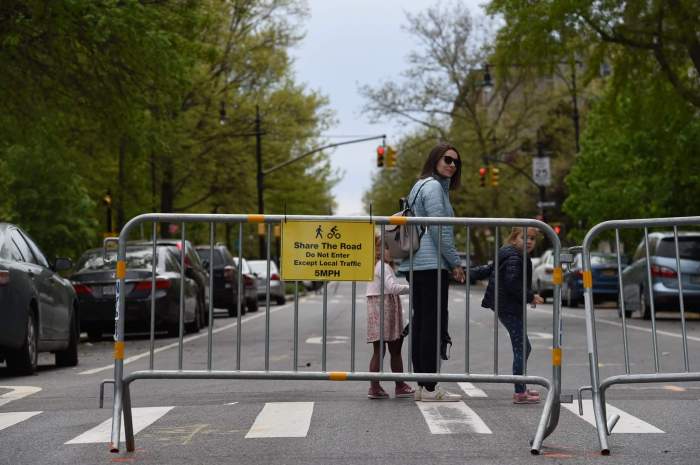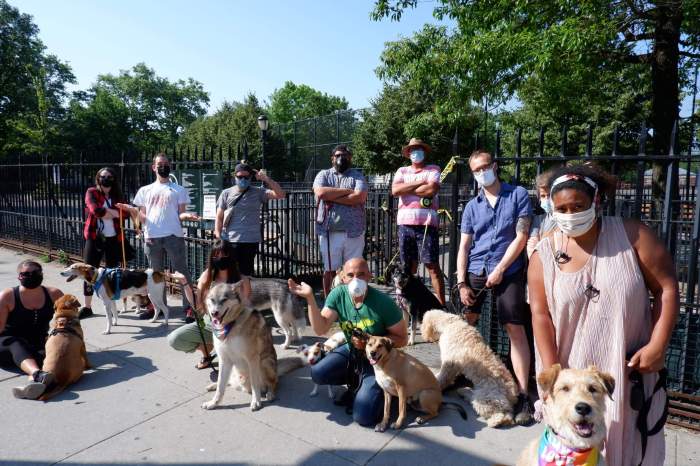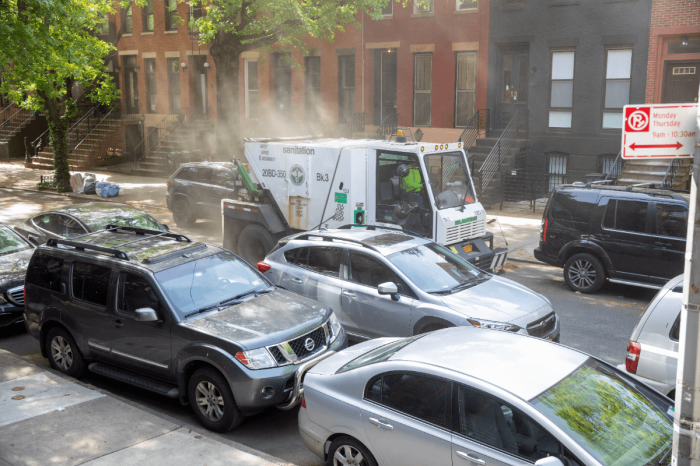Cyclists are lamenting the narrow width of Mayor Bill de Blasio’s proposed Brooklyn Bridge bike lane, saying the 8-foot wide path will lead to overcrowding and congestion.
“We should expect to see a lot more people biking, especially if we put a path over the Brooklyn Bridge that is not a hassle to use — and doing this makes these lanes obsolete from the beginning,” said Brian Howald at a Community Board 2 Transportation Committee on April 15.
The city’s Department of Transportation plans to turn the innermost car lane on the iconic span’s Manhattan-bound side into a two-way, 8-foot wide bike lane later this year, which de Blasio officially announced at his State of the City address in January.
Officials will paint the car lane green, while separating it with a concrete Jersey Barrier starting at Tillary and Adams streets, with the project expected to be complete this fall. The plan comes as a way to stop the intermingling between pedestrians and cyclists on the span’s often-clogged boardwalk, which sits above the currently-car-dominated roadways.
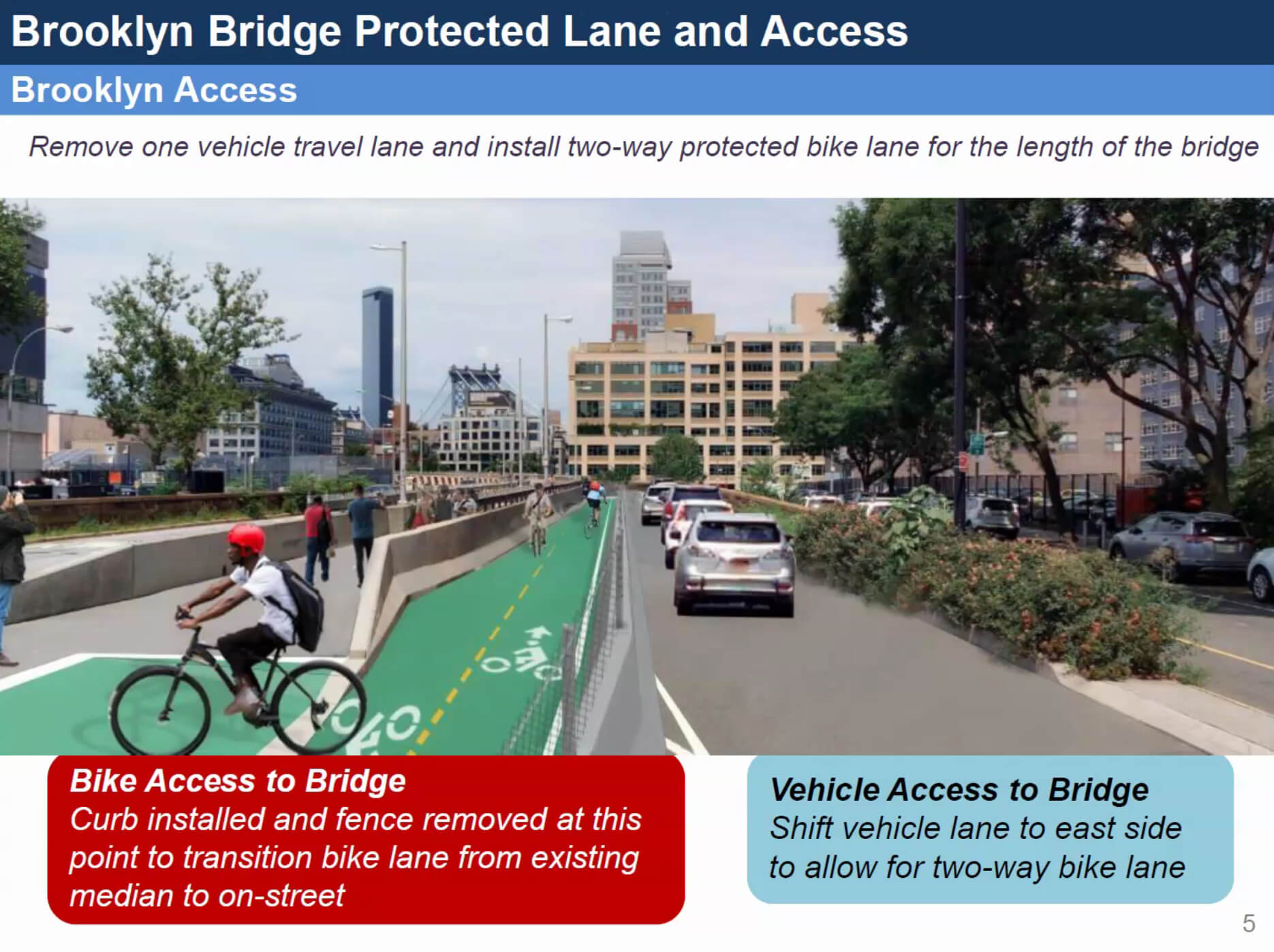
While pedal-pushers initially hailed the move, bikers on both sides of the span have voiced concerns about the narrow path, which will force them into 4-foot lanes each way — too narrow to accommodate two of the city’s own Citi Bikes riding side-by-side, whose handlebars are slightly more than 2 feet wide.
“There’s not enough space in this design if you get a flat, have cyclists at different speeds (including e-bikes vs. slower riders/children), or use a cargo bike,” wrote Katherine Willis in the CB2 web-conference’s chat box.
The limit is due to the agency repurposing only one of six 10-foot-wide car lanes, with the concrete barriers narrowing it by another 2 feet.
Agency reps revealed Thursday that they did take “a very serious look” at putting another bike lane on the Brooklyn-bound side of the bridge — one of the original renderings even showed an arrow in the current lane pointing in just one direction — but decided this is the best they could do within the mayor’s timeline of opening the path before he leaves office at the end of the year.
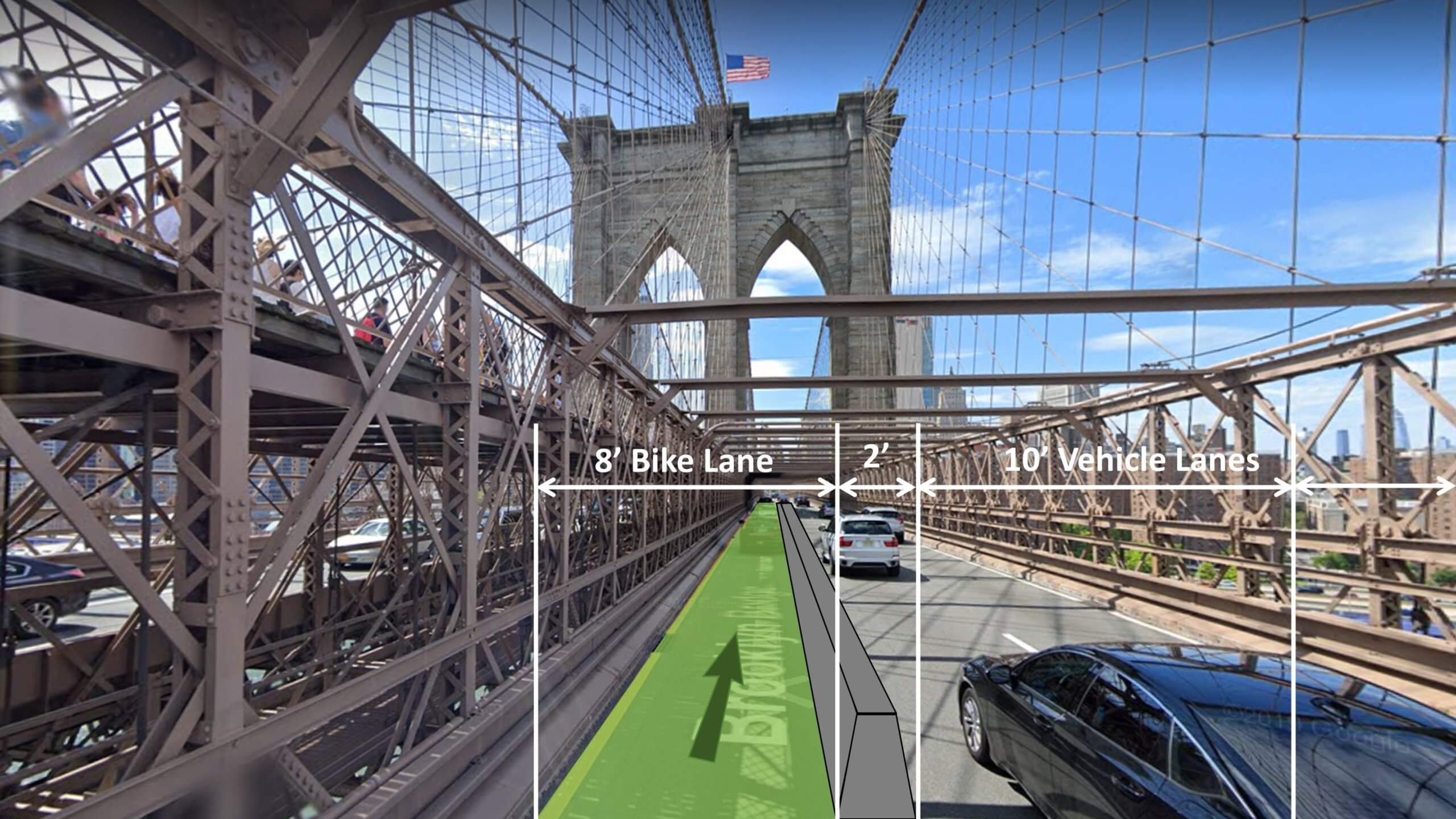
“This bike lane is being implemented completely within our DOT in-house forces in compliance with what the mayor announced at the State of the City that this was going to be done this year,” said Joannene Kidder. “Since the mayor announced it in January and this bike lane is expected to be open later this year, the way that we were able to do it is using all in-house forces for this work and so in order to meet that deadline, we’re doing the most straightforward approach to opening this bike lane.”
CB2 members suggested just converting another car lane on the Brooklyn-bound side, but DOT said that wasn’t possible in that timeframe, as they need at least one of the inner lanes for bridge maintenance and because the outer two lanes feed onto highways and would require a more extensive redesign.
“This does not preclude us from having a different solution that would require some sort of capital buildout of additional ramps of more substantial changes to the design of the bridge,” said Patrick Kennedy.
Another resident suggested the city still keep the walkway open for bikes during less busy hours — especially at night — for cyclists who aren’t comfortable being on the slim path as cars barrel past them.
“I think that you don’t understand what it’s like to be a 5-[foot]-4 woman biking across the bridge at night and I’d like to put my safety in perspective and I don’t know that it was considered,” said Caroline Todd told a male DOT rep. “If people aren’t going to ride this path because it’s noisy and there aren’t people on it, because they think it’s dangerous because it’s too narrow, I’m not sure that that experience is going to help my people bicycle more.”
To accommodate the Brooklyn Bridge bike lane, cars will no longer be allowed to turn right from Tillary Street onto Adams Street to get to the bridge, although drivers can still get on the bridge coming straight down Adams Street, and right turns from Tillary Street are still allowed for local access, according to DOT.
The new restrictions on cars caused the DOT to take some heat from area motorists, which officials say is currently used by some 600 vehicles at peak morning and evening hours.
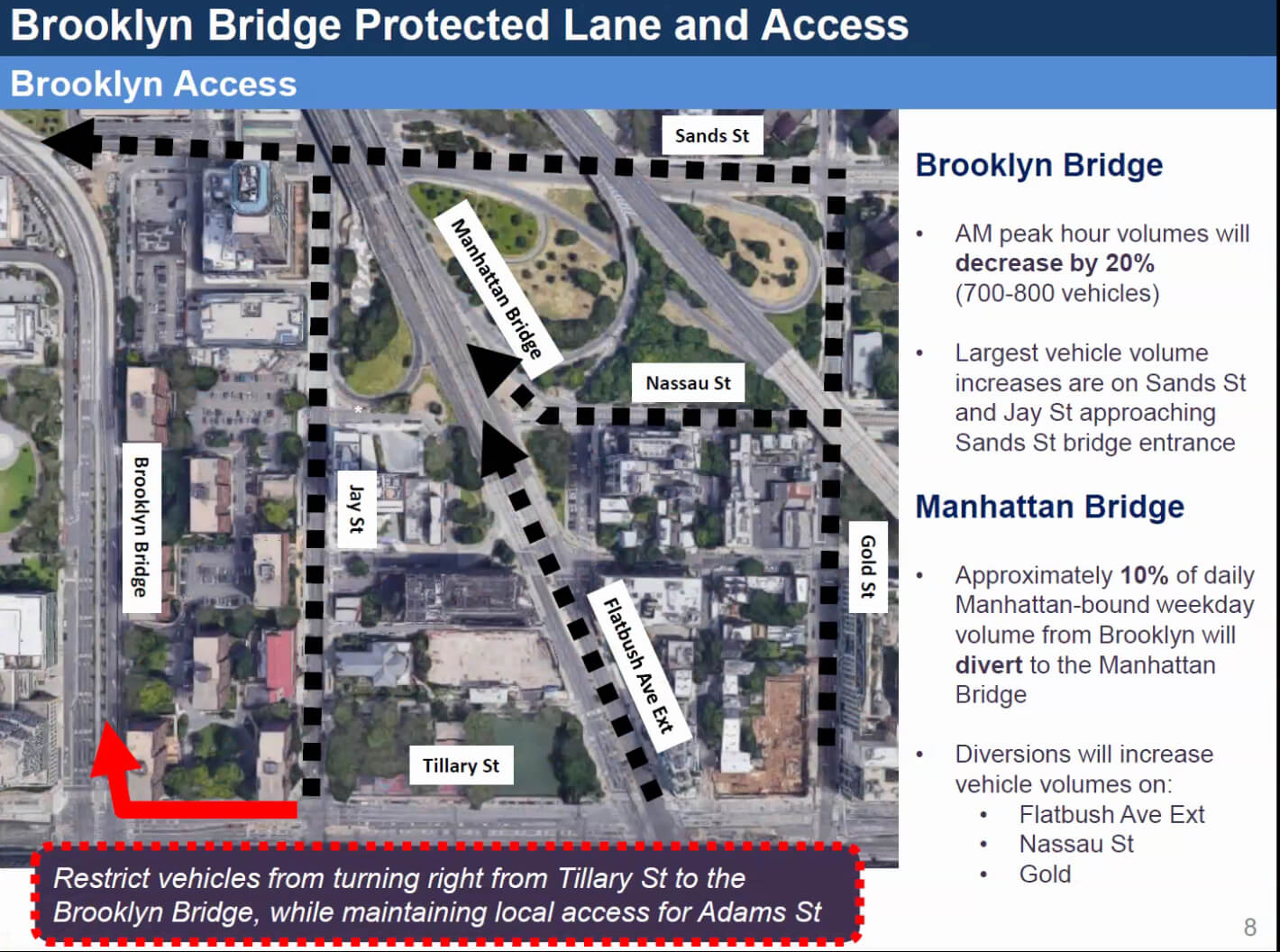
One resident of adjacent Concord Village said this move would divert hundreds of drivers around his housing complex to access the other bridge entrance at Sands Street via Adams and Jay streets.
“I love the bike lane, I appreciate that the bike lane is being implemented, but the result of that is going to directly affect all the residents in Concord Village by constant traffic on the [Adams Street] service road by increasing the traffic on Jay Street,” said Jon Quint. “I think the way you’re going to handle making the bridge available to bikes is going to ruin that part of the neighborhood.”
The proposed changes to the iconic span still need approval from the city’s Landmarks Preservation Committee.


